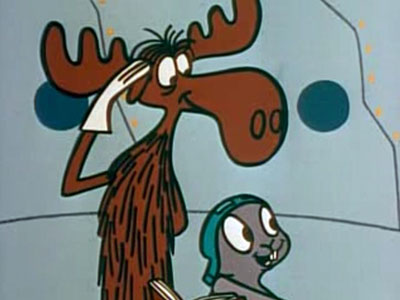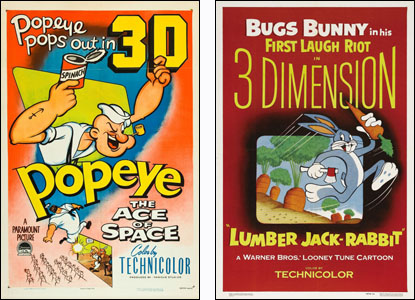
Earlier today in a piece about cartoons, I made reference to "runaway productions done in Mexico for twenty pesos." This brought a call from an old friend of mine, cartoonist Roman Arambula, who was a little upset about it. He took it as a slam at Gamma Productions, which was the most prominent studio in Mexico that did work for U.S. television…and I guess he took it personally since he worked there for several years before relocating to Los Angeles. Gamma most famously did work for two studios in the U.S. — the West Coast operation of Jay Ward (Rocky and Bullwinkle, Hoppity Hooper, etc.) and the East Coast firm, Total Television (King Leonardo, Tennessee Tuxedo, Underdog, et al).
Roman feels that historians have misrepresented Gamma as a studio filled with untrained talent pulled in off the street. That may have been true to some extent when it started but by around '60, which I think is also around when Roman went to work there, it was becoming pretty professional. Everyone can decide for themselves how good the animation was but I meant no offense to Roman or anyone who worked at Gamma. My point was that the rules changed when cartoon production segued from theatrical animation done on one kind of budget to TV animation done on another.
And there's probably an interesting history of Gamma to be written if someone will only interview Roman and the others who are still around who worked there. Is any good animation historian up for the challenge?
While I'm at it: I recently read How Underdog Was Born, a "how we did it" book by the creators of that show, Buck Biggers and Chet Stover. It's an interesting overview of Total Television and a unique look at what one had to do to sell a cartoon show in the sixties. According to Biggers and Stovers, their entry into the cartoon business came about as follows: General Mills was funding the Jay Ward Rocky and His Friends show on ABC and had Gamma Productions in Mexico doing the animation. Jay was always fighting with General Mills and/or the network about jokes that the latter entities thought would sail over the heads of the target audience, i.e., kids.
This had led to delays in scripts and storyboards being sent to Gamma, meaning that sometimes the artists there were sitting around…on the payroll but with nothing to do. That's just about the worst thing that can happen at a cartoon studio. When I worked at Hanna-Barbera, Bill Hanna would do anything, up to and including waterboarding the layout artists, not to have that happen. In the case of General Mills, they told Biggers and Stovers they wanted to have another operation producing cartoons so that Gamma would have always something to work on. (The book doesn't say this outright but the implication is that they also wanted to have another cartoon producer on their team in case Ward had to be dumped or if he demanded more money or anything of the sort.)
Biggers and Stovers went to work and came up with a show called King Leonardo and His Short Subjects, which was the first thing either man had done in animation and the first Total Television series. It's interesting how they went about it, studying the (then-short) list of cartoon shows that were on television because, for example, they felt their lead character had to be an animal that had not appeared on any other cartoon show. They "cast" the show by deciding on famous voices that would be replicated. Leonardo, for example, would be an imitation of actor Eugene Pallette and his loyal aide, Odie Cologne, would sound like Ronald Colman. Later, when it came time to hire actors, they looked for actors who could do the designated impressions.
At the last minute, just before the final presentation to General Mills, they discovered the company was expecting to see artwork. They didn't have artwork, nor did they have an experienced cartoonist available to do artwork…so Stovers, who drew but had never done that kind of thing before, designed the characters. Somehow, it all worked out and King Leonardo became a pretty big hit…with more shows to follow.
Another point of interest: At one point, Jay Ward and Total were both developing new shows at the same time. The one Total came up with was Underdog…and you may remember that in that show's opening, there's a line where onlookers go…
"It's a bird!"
"No, it's a plane!"
"No, it's a frog!"
And then Underdog soars past and in the lilting voice of Wally Cox, he says, "Not plane nor bird nor even frog…it's just little ol' me — Underdog!"
Well, if we believe this book, that was an inside joke because Biggers and Stovers had been told that they could develop any kind of show they wanted…except a show about a frog. This was because Ward was developing a show about a frog. His would also sell and it would be called Hoppity Hooper.
The book's narrative takes some odd detours but if you're at all familiar with their shows, it's quite interesting. You can order a copy here. If you'll notice, Amazon has one of their great "package deals" where they take two related items — in this case, the book and an Underdog DVD — and sell them for exactly the same price you'd pay if you bought them separately. Wonder how many people don't stop and do the math so they think they're getting a bargain.




